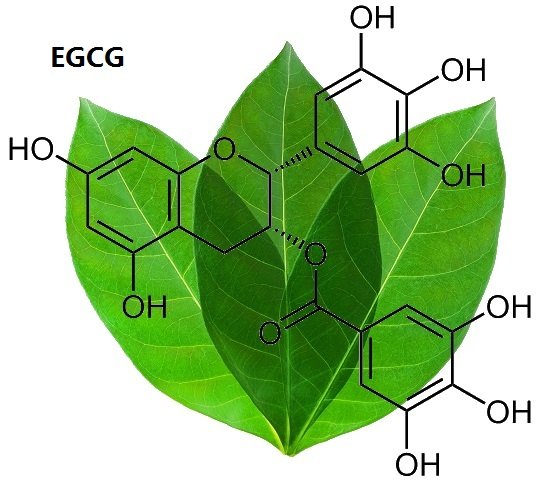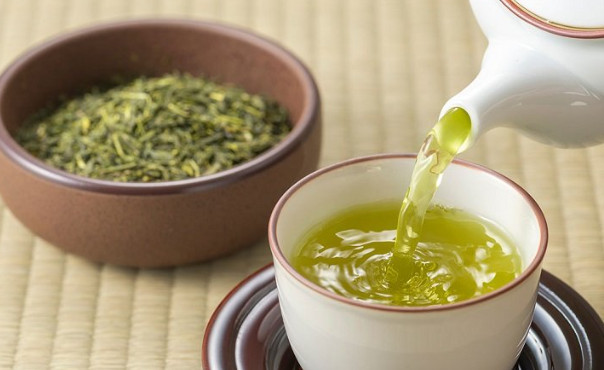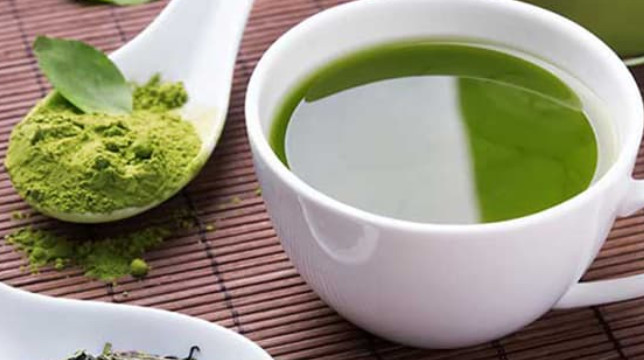Green tea is a popular beverage that has been consumed for centuries in various cultures, particularly in East Asia. It is made from the leaves of the Camellia sinensis plant, which undergo minimal processing after being harvested, resulting in a higher concentration of antioxidants and other beneficial compounds compared to black or oolong tea.
Green tea is known for its numerous health benefits, including reducing the risk of chronic diseases such as cardiovascular disease, type 2 diabetes, and certain types of cancer. It has also been shown to improve brain function, increase metabolism and aid in weight loss, and promote dental health.
Due to its popularity and health benefits, green tea has become a staple in many households worldwide. In this article, we will delve deeper into the history, production, health benefits, and potential side effects of green tea.

1. Introduction
1.1. Background and history of green tea
Green tea, scientifically known as Camellia sinensis, is one of the most popular beverages consumed worldwide, with a long history that dates back thousands of years. The origin of green tea can be traced back to ancient China, where it was initially used for medicinal purposes. The legendary Chinese Emperor Shennong, who is considered the father of agriculture and herbal medicine, is said to have discovered the healing properties of green tea around 2737 BCE.
Over time, the consumption of green tea spread throughout Asia, particularly in Japan, where it became an integral part of the culture. The Japanese tea ceremony, known as “Chanoyu” or “Chado,” is a ceremonial practice that celebrates the art of preparing and presenting green tea, with an emphasis on aesthetics, simplicity, and mindfulness. The tea ceremony reflects the Zen Buddhist philosophy and has played a significant role in shaping the tea culture in Japan.
Green tea was introduced to the Western world during the 16th and 17th centuries, primarily through trade with the Dutch and Portuguese. In recent decades, green tea has gained increased attention due to its numerous health benefits, which have been supported by a growing body of scientific research.
1.2. Green tea varieties and cultivation
Green tea is produced from the leaves of the Camellia sinensis plant, which is native to eastern Asia. Although green tea, black tea, and oolong tea all come from the same plant, they differ in terms of processing methods, which affect their flavor, color, and chemical composition.
The process of making green tea involves harvesting the young leaves and buds, followed by withering, steaming, or pan-firing to prevent oxidation, which is responsible for the darkening of the leaves and the formation of black and oolong teas. The leaves are then rolled and dried to produce the final product. Green tea is known for its characteristic green color and fresh, grassy flavor, which can vary depending on the specific variety and processing technique.
There are numerous varieties of green tea, each with its unique flavor profile and characteristics. Some of the most popular green tea varieties include:
– Longjing (Dragon Well): A famous Chinese green tea with a delicate, sweet flavor and a slightly nutty aroma, originating from the Hangzhou region.
– Sencha: The most common Japanese green tea, characterized by its bright green color, vegetal taste, and slightly astringent finish.
– Gyokuro: A high-quality Japanese green tea with a rich, umami flavor and a smooth, sweet finish, grown in the shade to increase the concentration of chlorophyll and amino acids.
– Matcha: A powdered Japanese green tea used in the traditional tea ceremony, renowned for its vibrant green color, creamy texture, and strong, slightly bitter taste.
– Biluochun (Green Snail Spring): A Chinese green tea with a curly, spiral-shaped leaf, known for its fruity and floral aroma and mellow, sweet taste.
Green tea is cultivated in various regions across Asia, with China, Japan, and India being the largest producers. The climate, soil, altitude, and cultivation techniques can all influence the flavor and quality of green tea.

2. Chemical Composition of Green Tea
Green tea contains a diverse range of bioactive compounds that contribute to its unique flavor profile and numerous health benefits. The main components of green tea include:
2.1. Catechins
Catechins are a class of polyphenolic compounds that are abundant in green tea, accounting for approximately 30-42% of its dry weight. They are responsible for the astringency of green tea and contribute to its antioxidant, anti-inflammatory, and anticancer properties. The major catechins found in green tea are:
– Epigallocatechin-3-gallate (EGCG): The most abundant and biologically active catechin in green tea, EGCG has been extensively studied for its potential health benefits, including cancer prevention, cardiovascular health, and weight management.
– Epigallocatechin (EGC): Another prominent catechin in green tea, EGC possesses strong antioxidant activity and has been associated with various health benefits.
– Epicatechin-3-gallate (ECG) and Epicatechin (EC): These catechins are present in smaller amounts in green tea but still contribute to its overall health-promoting properties.
2.2. Flavonoids
Flavonoids are another group of polyphenolic compounds found in green tea, contributing to its taste and color. They have antioxidant, anti-inflammatory, and anticancer properties. Some of the main flavonoids in green tea include kaempferol, quercetin, and myricetin.
2.3. Caffeine and Theanine
Caffeine is a natural stimulant present in green tea, typically at levels ranging from 2-4% of its dry weight. Caffeine can enhance mental alertness, increase energy levels, and improve physical performance. Green tea also contains the amino acid L-theanine, which has been shown to promote relaxation and improve cognitive function. The combination of caffeine and L-theanine is believed to provide a balanced and sustained energy boost without the jitteriness or crash often associated with caffeine consumption.
2.4. Vitamins and Minerals
Green tea is a natural source of various vitamins and minerals, including vitamins C, E, B2, and K, as well as minerals such as potassium, calcium, and magnesium. While the amounts of these nutrients in green tea may not be significant enough to meet daily requirements, they can still contribute to overall health when consumed as part of a balanced diet.
2.5. Other phytochemicals
In addition to the primary compounds mentioned above, green tea contains a variety of other phytochemicals, such as carotenoids, chlorophyll, and volatile organic compounds like aldehydes, esters, and terpenes. These compounds can contribute to the flavor, aroma, and health benefits of green tea.

3. Antioxidant Properties of Green Tea
One of the key health-promoting properties of green tea is its potent antioxidant activity, which is mainly attributed to its high content of catechins and flavonoids. Antioxidants play a crucial role in protecting the body against oxidative stress, which occurs due to an imbalance between the production of reactive oxygen species (ROS) and the body’s ability to detoxify them. Excessive oxidative stress can lead to cellular damage, inflammation, and the development of various chronic diseases. The antioxidant properties of green tea can be categorized as follows:
3.1. Free radical scavenging
Free radicals are highly reactive molecules that can cause damage to cellular components such as DNA, proteins, and lipids. Green tea catechins, particularly EGCG and EGC, have been shown to effectively scavenge various types of free radicals, including superoxide anions, hydroxyl radicals, and peroxyl radicals. By neutralizing these harmful molecules, green tea antioxidants can help prevent cellular damage and reduce the risk of oxidative stress-related diseases.
3.2. Oxidative stress reduction
Green tea antioxidants not only neutralize free radicals but also have the ability to modulate cellular antioxidant defense systems. They can enhance the activity of endogenous antioxidant enzymes, such as superoxide dismutase (SOD), catalase (CAT), and glutathione peroxidase (GPx), which play a vital role in protecting cells against oxidative damage. Green tea has also been shown to increase the levels of non-enzymatic antioxidants, such as glutathione, further bolstering the body’s defenses against oxidative stress.
3.3. Cellular protection
By reducing oxidative stress and enhancing antioxidant defenses, green tea can provide protection at the cellular level. This includes preventing oxidative damage to cellular components, such as DNA, lipids, and proteins, which can lead to mutations, cell dysfunction, and cell death. Furthermore, green tea catechins have been shown to inhibit the activation of redox-sensitive signaling pathways, such as nuclear factor-kappa B (NF-κB) and activator protein-1 (AP-1), which play a role in regulating inflammation, cell proliferation, and apoptosis. By modulating these pathways, green tea may help prevent the development and progression of various chronic diseases, including cancer, cardiovascular disease, and neurodegenerative disorders.

4. Health Benefits of Green Tea
The potent antioxidant properties of green tea, along with its other bioactive components, have been linked to a wide range of health benefits. These benefits encompass various aspects of human health, as described below:
4.1. Cardiovascular health
Green tea has been shown to have a positive impact on cardiovascular health through several mechanisms:
4.1.1. Blood pressure regulation: Green tea can help regulate blood pressure by improving endothelial function and promoting vasodilation. It also reduces the production of angiotensin II, a hormone that can cause blood vessel constriction and increase blood pressure.
4.1.2. Cholesterol management: Green tea can help lower LDL (“bad”) cholesterol levels and increase HDL (“good”) cholesterol levels, thereby improving the overall cholesterol profile. It can also prevent the oxidation of LDL cholesterol, which contributes to the formation of plaque in blood vessels.
4.1.3. Prevention of atherosclerosis: The antioxidant and anti-inflammatory properties of green tea can help prevent the development of atherosclerosis, a condition characterized by the buildup of plaque in the arteries, which can lead to heart disease and stroke.
4.2. Cancer prevention and treatment
Green tea has demonstrated potential in cancer prevention and treatment through various mechanisms:
4.2.1. Antiproliferative effects: Green tea catechins, particularly EGCG, can inhibit the growth and proliferation of cancer cells by targeting various signaling pathways involved in cell cycle regulation.
4.2.2. Apoptosis induction: Green tea can promote the programmed cell death (apoptosis) of cancer cells without affecting normal cells, thereby limiting the growth and spread of tumors.
4.2.3. Anti-angiogenesis: Green tea can inhibit the formation of new blood vessels (angiogenesis) in tumors, which is essential for their growth and progression.
4.3. Weight management and obesity control
Green tea has been shown to aid in weight management and obesity control through several mechanisms:
4.3.1. Thermogenesis enhancement: Green tea can increase energy expenditure by enhancing thermogenesis, the process by which the body generates heat and burns calories.
4.3.2. Fat oxidation: Green tea can promote fat oxidation, or the breakdown of stored fat for energy, which can contribute to weight loss and improved body composition.
4.3.3. Appetite suppression: Green tea has been suggested to help regulate appetite and reduce food intake, which can further support weight management efforts.
4.4. Neuroprotective effects
Green tea has demonstrated neuroprotective properties, which may help improve cognitive function and prevent neurodegenerative disorders:
4.4.1. Cognitive function improvement: The combination of caffeine and L-theanine in green tea can enhance cognitive performance, including attention, memory, and reaction time.
4.4.2. Alzheimer’s and Parkinson’s disease prevention: The antioxidant and anti-inflammatory properties of green tea can help protect brain cells from damage and reduce the risk of developing Alzheimer’s and Parkinson’s disease.
4.5. Anti-inflammatory and immune-boosting properties
Green tea has been shown to possess anti-inflammatory properties, which can help reduce chronic inflammation and support immune function. Green tea catechins can modulate the production of inflammatory cytokines and inhibit the activation of pro-inflammatory signaling pathways, such as NF-κB.
4.6. Oral health benefits
Green tea can contribute to improved oral health through various mechanisms:
4.6.1. Antimicrobial activity: Green tea catechins exhibit antimicrobial activity against common oral pathogens, such as Streptococcus mutans and Porphyromonas gingivalis, which can help prevent dental caries and periodontal disease.
4.6.2. Prevention of bad breath: Green tea can help neutralize volatile sulfur compounds, which are responsible for bad breath or halitosis. Its antimicrobial properties also contribute to maintaining a healthy oral environment.
4.6.3. Reduction of tooth decay: Green tea has been shown to inhibit the growth of cavity-causing bacteria and reduce the formation of dental plaque, which can help prevent tooth decay.
4.7. Diabetes management
Green tea may help manage type 2 diabetes through several mechanisms:
4.7.1. Blood sugar regulation: Green tea can improve insulin sensitivity and glucose tolerance, which can help regulate blood sugar levels and prevent diabetes-related complications.
4.7.2. Reduction of oxidative stress: Green tea’s antioxidant properties can help reduce oxidative stress in people with diabetes, which can contribute to the development of complications such as diabetic retinopathy and nephropathy.
4.8. Skin health and anti-aging benefits
Green tea has been shown to provide various benefits for skin health and appearance:
4.8.1. Protection against UV damage: Green tea’s antioxidant properties can help protect the skin from harmful ultraviolet (UV) radiation, which can cause premature aging, sunburn, and skin cancer.
4.8.2. Anti-inflammatory effects: Green tea can help reduce skin inflammation and redness, which may be beneficial for conditions such as acne, psoriasis, and eczema.
4.8.3. Anti-aging properties: Green tea can help combat the signs of aging by improving skin elasticity, reducing the appearance of wrinkles and fine lines, and promoting overall skin health.
4.9. Liver health support
Green tea may provide support for liver health through various mechanisms:
4.9.1. Detoxification: Green tea can enhance the liver’s detoxification capabilities by inducing the activity of phase II detoxifying enzymes, which help eliminate harmful compounds from the body.
4.9.2. Protection against liver disease: Green tea’s antioxidant and anti-inflammatory properties can help protect the liver from damage caused by alcohol, toxins, and certain medications, as well as reduce the risk of developing non-alcoholic fatty liver disease (NAFLD) and liver fibrosis.
These are just a few examples of the numerous health benefits associated with green tea consumption. It is important to note that while green tea can provide support for various aspects of health, it should not be considered a replacement for a balanced diet and a healthy lifestyle.

5. Green Tea Preparation and Consumption
To fully enjoy the health benefits and unique flavor of green tea, proper preparation and consumption methods are essential. The following sections outline different aspects of preparing and consuming green tea:
5.1. Types of green tea
There are several types of green tea, each with its own unique flavor profile, appearance, and health benefits. Some of the most popular types include:
– Sencha: The most common type of Japanese green tea, characterized by its bright green color and grassy flavor.
– Gyokuro: A high-quality Japanese green tea, grown in the shade to develop a rich, sweet flavor and higher levels of L-theanine.
– Matcha: A powdered Japanese green tea made from shade-grown leaves, known for its vibrant green color and concentrated flavor, often used in tea ceremonies and as a culinary ingredient.
– Longjing (Dragon Well): A famous Chinese green tea with a flat, spear-shaped leaf and a delicate, sweet flavor.
– Gunpowder: A Chinese green tea with tightly rolled leaves resembling gunpowder pellets, known for its bold, slightly smoky flavor.
5.2. Brewing green tea
Proper brewing techniques can greatly affect the taste and quality of green tea. Some general guidelines for brewing green tea include:
– Use fresh, cold water: Start with high-quality water, preferably filtered or spring water, to ensure the best flavor.
– Watch the temperature: Green tea is best brewed at a lower temperature (160-175°F or 70-80°C) to prevent bitterness and preserve its delicate flavors. Boiling water can scald the tea leaves and result in a bitter taste.
– Steeping time: Green tea should be steeped for a shorter duration (2-3 minutes) to prevent over-extraction, which can lead to bitterness. Some high-quality green teas, such as Gyokuro, may require even shorter steeping times (1-2 minutes).
– Tea-to-water ratio: Generally, use 1 teaspoon of loose-leaf green tea per 8 ounces (240 ml) of water. Adjust the amount of tea and steeping time to your personal taste preferences.
5.3. Recommended daily consumption
To fully reap the health benefits of green tea, a regular intake of 3-5 cups per day is recommended. However, individual tolerance and preferences may vary. It is important to consider the caffeine content and potential side effects when determining the appropriate daily intake.
5.4. Potential side effects and precautions
While green tea is generally considered safe for most individuals, excessive consumption may lead to certain side effects, including:
– Caffeine sensitivity: Green tea contains caffeine, which can cause insomnia, jitteriness, or increased heart rate in some individuals, especially those sensitive to caffeine. Pregnant and breastfeeding women, as well as individuals with heart conditions or anxiety disorders, should limit their green tea consumption.
– Iron absorption: Green tea may interfere with the absorption of non-heme iron (found in plant-based foods) when consumed with meals. To minimize this effect, it is recommended to consume green tea between meals or along with foods rich in vitamin C, which can enhance iron absorption.

6. Green Tea in Traditional Medicine and Modern Research
Green tea has a long history of use in traditional medicine systems, particularly in China and Japan, where it has been consumed for centuries for its therapeutic properties. Modern research has further investigated and validated many of these traditional health claims, leading to increased scientific understanding and acceptance of green tea’s health benefits. This section will outline the role of green tea in traditional medicine and its relationship with modern research:
6.1. Green tea in traditional Chinese medicine (TCM)
In TCM, green tea has been used to treat various ailments and improve overall health. It is considered to have a cooling and detoxifying effect, which can help balance the body’s “Qi” or vital energy. Some of the traditional uses of green tea in TCM include:
– Promoting digestion and reducing flatulence
– Enhancing mental alertness and focus
– Regulating body temperature and promoting fluid balance
– Providing relief from headaches, dizziness, and fatigue
– Strengthening the immune system
6.2. Green tea in traditional Japanese medicine (Kampo)
In Kampo, the Japanese adaptation of TCM, green tea is similarly revered for its health-promoting properties. It is often used to:
– Improve digestion and treat gastrointestinal disorders
– Enhance mental focus and clarity
– Strengthen the immune system and prevent illness
– Alleviate stress and promote relaxation
– Support liver and kidney health
6.3. Modern research on green tea’s health benefits
Over the past few decades, extensive scientific research has been conducted to examine the health benefits of green tea and its bioactive components. Many of the traditional health claims associated with green tea consumption have been validated and further elucidated through modern research. Some examples include:
– Antioxidant and anti-inflammatory properties: Numerous studies have demonstrated the potent antioxidant and anti-inflammatory effects of green tea catechins, particularly EGCG, which can help prevent oxidative stress and reduce the risk of chronic diseases.


